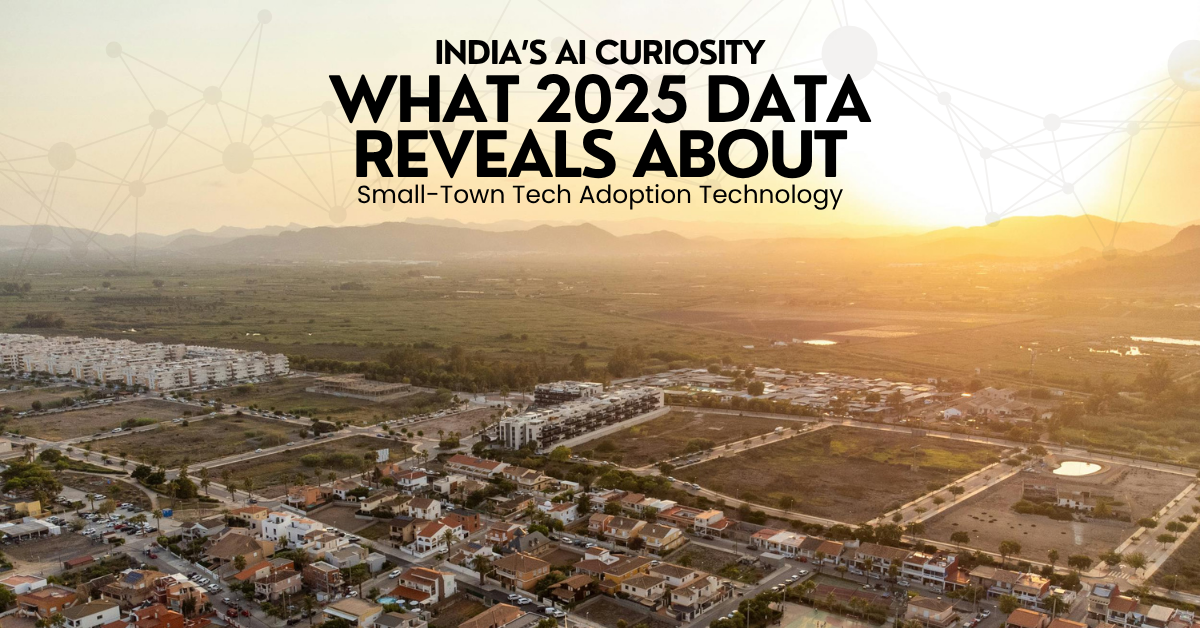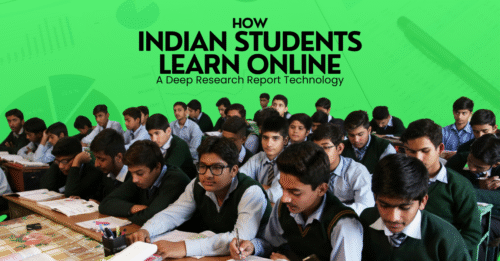In India, 2025 isn’t just the year of flying drones and delivery bots in metro cities. It’s also the year when small towns—from Bhilwara to Berhampur—are quietly fueling an AI curiosity wave. These aren’t just data points in a tech report. These are real people—from small-shop owners to students in Tier-3 towns—who are now asking smart questions to smarter machines.
So what’s really happening with AI in small-town India? Let’s dive deep.
📊 The Big Shift: AI Interest Is No Longer Just an Urban Affair
For a long time, artificial intelligence was a topic for IT parks, engineering colleges, and LinkedIn debates. But new research from leading digital behavior platforms suggests something surprising: over 43% of voice-based AI queries in India in 2025 are now coming from Tier-2 and Tier-3 towns.
Whether it’s using Google Assistant in Bhojpuri, experimenting with generative AI in regional YouTube videos, or exploring local jobs via voice search—the demand is growing fast, and it’s very real.
💬 Meet India’s New AI Explorers
Let’s break the stereotype. AI users in small towns aren’t all coders or science students. They are:
College students using ChatGPT to understand tough math in Hinglish
Small business owners using AI tools to generate invoice templates
Teachers using text-to-speech tools to translate lessons
Content creators editing their reels with AI-powered captions and thumbnails
AI isn’t just replacing jobs—it’s becoming the assistant they never had.
🔍 What the Data Says: Key Findings from 2025
Here’s a snapshot of what recent surveys across 10,000+ users in Tier-2 and Tier-3 India reveal:
| Parameter | % of Users Engaged |
|---|---|
| Used voice AI (Hindi/regional) | 67% |
| Tried AI chatbots for homework | 49% |
| Watched AI tutorials on YouTube | 58% |
| Used AI apps for business tasks | 31% |
| Interested in AI upskilling | 72% |
📌 Insight: Accessibility, local language support, and curiosity—not just tech literacy—are driving this adoption.
🌐 Why This Matters: The Bharat Opportunity
India’s digital revolution has long been called a tale of two worlds—urban tech vs rural lag. But AI is rewriting that narrative. Here’s why:
Language isn’t a barrier anymore. AI tools are now supporting over 11 Indian languages.
Affordable smartphones and data rates make experimentation easier.
Government skilling programs are introducing AI at the grassroots level.
Regional creators are simplifying AI concepts for their audiences.
The curiosity is there. The intent is strong. And finally, the tools are accessible.
🤖 Local Use Cases: Small Town, Big Ideas
A school in Sambalpur, Odisha, uses AI tools to help students with dyslexia read better.
A tailoring shop in Jhansi uses Canva’s AI-generated designs to share WhatsApp catalogs.
A YouTuber in Surat edits entire episodes using AI voiceovers—cutting down production time by 60%.
These aren’t exceptions. They’re becoming the norm.
💡 What Can Startups and Brands Do?
If you’re building for India and ignoring Tier-3 towns, you’re missing the next 500 million users. Here’s how you can serve them:
Build for low bandwidth. Assume limited infrastructure and design accordingly.
Use regional languages. Hindi, Tamil, Bengali, Gujarati—serve content that feels native.
Voice-first is the future. Many first-time users prefer talking to typing.
Educate and empower. Don’t just sell tools—teach how to use them.
🚀 What’s Next: From Curiosity to Capability
India’s small towns are at the AI doorstep. They don’t want complex jargon—they want value, in their language, on their phone. As platforms evolve and regional language models improve, we’ll see more adoption—from students, artisans, farmers, and gig workers.
If 2023 was about AI buzz in big cities, 2025 is about AI becoming personal in small towns.
🧠 Final Thought: The Future Speaks Hindi (and More)
The biggest tech stories don’t always come from Bengaluru or Mumbai anymore. Sometimes, they come from a tea seller in Amroha who asks Alexa for stock prices in Hindi, or a class 9 girl in Gwalior who learns AI art generation after school.
India’s next tech chapter will be written in local scripts, voiced in regional accents, and powered by small-town ambition. The AI future isn’t coming—it’s already here, just not where you thought.
Read
How Artificial Intelligence Is Transforming Indian Startups in 2025







